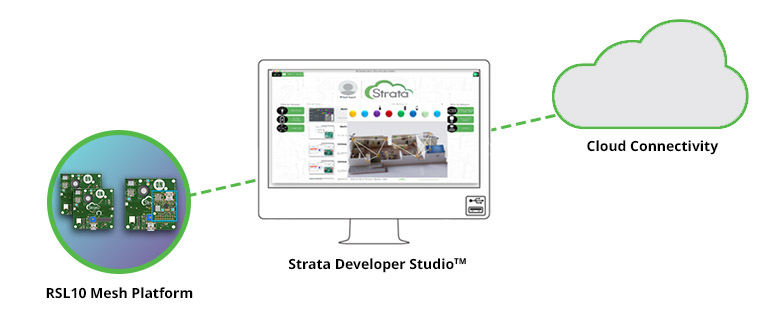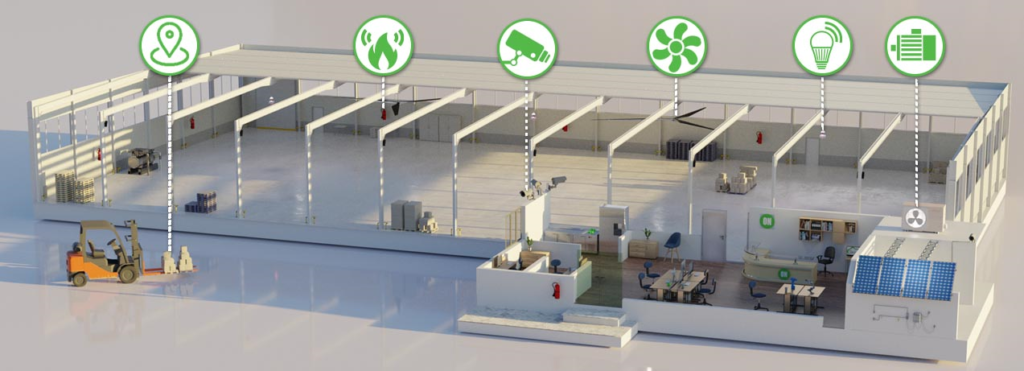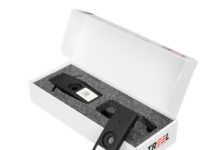
The rapid expansion of the IoT has created demand for mesh networking topology, where many tens or even hundreds of devices can all be part of the same local network, sharing actionable data securely and quickly. Many of the local and personal area network protocols commonly used in smart devices support mesh topology.
Mesh networking describes the way connections form between devices in a cluster to create pathways that can reach every device on the network. Within certain protocols, there is no predefined routing path set during commissioning, instead each device communicates its status and the protocol decides how best to route its data. Crucially, this means the connections between two devices are not fixed; they can change, depending on the network’s status. The result is that adding or removing a device will not cause the network to fail; the remaining nodes simply form another pathway. Discoverability of new nodes is a key feature of a mesh protocol.
Because connections formed in a mesh network can be created and destroyed ad hoc, this topology is also referred to as an ad hoc network. Each node can act as both a waypoint and an endpoint; able to both propagate networking traffic, as well as receive and act on the information being shared. As such, the network is created in situ, often by the end user, simply by introducing a device into the wireless area.
This brings its own challenges for developers, who must design a device without knowing exactly how it will behave in a network, in terms of the number of other devices it will operate with, or how it will be positioned in the network. Fortunately, wireless protocols that support mesh networking understand these challenges and provision for them. One recent addition to the list of wireless protocols to support mesh networking is Bluetooth® Low Energy technology.
Development kits for Bluetooth mesh networking
The decision to use a mesh network will likely be based on the type of devices the network will contain, the size of the network and the resiliency required. , A variety of sensors and actuators are used in the IoT depending on the use case and the target vertical segment (Industrial, Medical, Buildings, etc.). So, when choosing a mesh networking development and evaluation environment, it makes sense to choose one that features as many sensor types as possible.
While the underlying protocol provides the framework for a mesh network, the developer will need to add the application. For this reason, it is important to ensure the development environment’s hardware is closely integrated with an easy-to-use and a comprehensive software development kit, or SDK. This close integration will ensure that the development environment doesn’t become another design hurdle to overcome, but instead forms part of the overall flow and accelerates the design cycle.
When developing a mesh networking solution, it is helpful to be able to include as many nodes as needed, to ensure correct operation and to test various features including the ability to relay messages and to simulate network robustness. When evaluating potential development kits, engineers should therefore assess the kit’s ability to scale up the environment, with additional test nodes. This will allow the design team to not only emulate a large network, but also test the underlying technology’s ability to handle large network topologies.
Another important aspect to consider is the real-world provisioning of the network once it has been deployed. One of the major advantages of choosing Bluetooth technology as the protocol for a mesh network is its almost universal adoption. Today, practically all smartphones and tablets support Bluetooth Low Energy connectivity Having a Bluetooth technology-enabled device able to run third-party applications means it becomes much simpler to provision a mesh network.
An integrated approach to mesh network development
One environment that provides all of these features is the RSL10 Mesh Platform from ON Semiconductor. It is based on the RSL10 System-in-Package (RSL10 SIP), which is the industry’s lowest power Bluetooth technology solution that integrates a radio SoC with antenna and all passive components required to implement a Bluetooth 5 certified radio. This powerful yet small, low power device forms the foundation of the RSL10 Mesh Platform (Figure 1). The accompanying certified mesh stack allows developers to exercise various mandatory and optional features defined in the Bluetooth Low Energy technology mesh specification.

As Figure 1 shows, the development kit integrates an RSL10 SIP alongside several sensors and actuators, typical of the type used in IoT applications. The main board is compatible with the Strata Developer Studio™ platform, which is important to making this a complete solution. Figure 2 provides a block diagram of a node from the RSL10 Mesh Platform.

Figure 2: A block diagram of a Bluetooth mesh node, as included in the RSL10 Mesh Platform
The Strata Developer Studio is ON Semiconductor’s cloud-based development platform, which supports the evaluation and development phase of a project by providing instant and easy access to all of the design collateral associated with a development kit. By simply plugging an enabled board into a PC running the software, the Strata Developer Studio instantly identifies the board and locates all of the design support available from ON Semiconductor’s cloud resource. In this way, all of the design data engineers need is always available and always up to date (Figure 3).

Figure 3: The Strata Developer Studio provides instant access to the latest design collateral
Using the Strata Developer Studio, engineers can also benefit from additional features such as interactive simulated environments that simply aren’t offered by other development kits. All of the RSL10 Mesh Nodes connected over Bluetooth Low Energy to the Strata Gateway are represented on the screen, live and in real-time. Engineers can then interact with the nodes as if they were real mesh network nodes in a deployed application. This functionality is available ‘out of the box’, making the evaluation and development process much faster. Figure 4 provides a representative illustration of how the Strata Developer Studio can bring mesh networking to life, increasing engineering productivity.

Figure 4: Strata brings mesh networking to life
In addition, the RSL10 Mesh application for smart mobile devices is available for Android™ and iOS®. This provides a simple way of discovering and provisioning Bluetooth mesh nodes based on the RSL10 SIP. Using the app, nodes can be controlled using commands such as on and off, as well as setting the hue, saturation and light level for nodes with LEDs.
Conclusion
While modern wireless protocols like Bluetooth offer mesh networking capabilities, developing a device to operate as a mesh network node has its own challenges. The network supports an ad hoc approach to forming and destroying connections, which is dissimilar to other forms of peer-to-peer network models. Bluetooth is unique in its ability to support mesh networking while retaining its heritage in peer to peer connectivity; this gives it an advantage over other technologies. For this reason, it is becoming more popular in all areas of the IoT.
Modern development tools can dramatically lower the challenge to developing a mesh network based on Bluetooth Low Energy technology. The RSL10 Mesh Platform is a good example of how bringing all elements together into one environment can make engineering teams more productive and reduce the time to market for manufacturers.



















